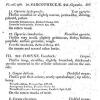
09-01-2026 17:41
Arnold BüschlenHallo, F. dilatata wird von vielen Bryoparasiten

10-01-2026 20:00
Tom SchrierHi all,We found picnidia on Protoparmeliopsis mur

07-01-2026 22:22
 Danny Newman
Danny Newman
Tatraea sp. on indet. hardwood The Swag, Great Sm

10-01-2026 01:18
 Danny Newman
Danny Newman
cf. Neovaginatispora fuckelii on indet. shrub Pre

07-01-2026 10:24
 Danny Newman
Danny Newman
Pezicula sp. on indet. hardwood Appalachian Highl

09-01-2026 10:08
 Blasco Rafael
Blasco Rafael
Hola, en el mismo habitat que la anteriorRetamaDia

08-01-2026 21:22
 Blasco Rafael
Blasco Rafael
Hola, He recogido esta muestra de Orbilia sobre Re

07-01-2026 17:29
 Marc Detollenaere
Marc Detollenaere
Dear Forum,On a barkless Populus I found some smal

10-11-2021 17:33
 Riet van Oosten
Riet van Oosten
Add-on topic http://www.ascofrance.com/forum/7059

07-01-2026 10:05
 Danny Newman
Danny Newman
cf. Chaetospermum on XylariaCosby Campground, Grea

Dear scientist interested in one name for genera in the Leotiomycetes,
Attached is a document with recommendations of generic names to use for competing names within the Leotiomycetes excluding the Erysiphales. Although we have made a recommendation here, these are certainly now final—just our best judgment. We would like input from the user community. Please let us know your preference for generic names, hopefully with some kind of rationale (or not). The generic names that have so far proven most controversial are listed below so add your thoughts.
Concerning the problem of not having enough data to decide, we would argue that decisions of some kind must be made. Plant pathologists want to know which name to use and we cannot let these issues remain undecided until all the molecular work is completed. Thus, we need to make a best judgment and move ahead.
The genera listed in the document are synonyms. Below are names that could go either way based on the few of us who have expressed opinions. Include your comments about the use of one generic name versus another name in this document, rather than in the manuscript. We will evaluate suggestions and re-write the manuscript to reflect them as best we can. Comments about wording should be made in the document with track changes on.
Genera about which your thoughts and rationale are needed although comments on others are welcomed as well:
1.Ascocalyx 1926 versus Bothrodiscus 1907 and Pycnocalyx 1916
2.Coryne 1816 versus Pirobasidium 1902 and Ascocoryne 1967
Some folks prefer Ascocoryne.
3.Crinula 1821 versus Holwaya 1889.
4.Diplocarpon 1912 vs. Entomosporium1856
Please note that Drepanopeziza is not congeneric with these genera and is restricted to species on Populus. The name for black spot of roses could be considered either in Entomosporium or Diplocarpon but not Drepanopeziza.
5.Gremmeniella 1969 over Brunchorstia 1891
This decision especially concerns the use of the name Gremmiella abietina vs. Brunchorstia pinea for the disease known as Scleroderris canker of pine.
6.Pyrenopeziza vs. Cylindrosporium
7.Xylogone vs. Scytalidium
Please note any other recommended generic names from the document with which you disagree.
If you know of any other potential generic connections in the Leotiomycetes, please let us know as well.
We will list those who express their opinions including acceptance of these recommendations in the Acknowledgements.
Thank you!
Amy Rossman
Keith Seifert
Peter Johnston
Jeff Stone
Ludmila Maranova

This is my two cents...

Ascocoryne solitaria (Rehm 1891) will become Coryne albida (Berk. 1836).
Zotto
Concerning Coryne: This question should be considered for the generic name together with the species epithet. In my youth I learned the fungus as Coryne sarcoides, the name most attractive to me. But the oldest name for the anamorph is Coryne dubia, while sarcoides is explicitly introduced for the teleomorph. Thus obviously a case for list-protection.

I also considered this case, but I see in Index Fungorum that Tremella dubia Pers., listed as synonym of A. sarcoides, was published in 1800 and Lichen sarcoides Jacq. in 1781.
There is a Coryne dubia (Pers. 1797) Gray, which I consider as anamorph of A. sarcoides in my database, but IF not. Quite dubious what here is correct, in any case the epithet sarcoides seems to be the oldest.
The sentence below is incorrect in my opinion: Groves & Elliot created Ascocoryne because both Coryne and Pirobasidium refer to an anamorph. The diagnosis of the latter by Höhnel purely refers to an anamorph (as "P. sarcoides"), and he used Coryne for the teleomorph. Coryne is used by Gray 1821 only for the anamorph, as seen in the attach. The original Esenbeck (1816) I do not have.
From Leotiomycetes draft paper:
"The earlier monotypic genus Pirobasidium based on the same type species as Ascocoryne was overlooked by Grove & Wilson (1967) when they described Ascocoryne."
Zotto

Most generic names of species currently collected would not change. Coryne is an exception, but the older ones among us were already familiar with that name when making their first steps in mycology.
Bernard
 Leotiomycetes draft paper 2-7-14
Leotiomycetes draft paper 2-7-14